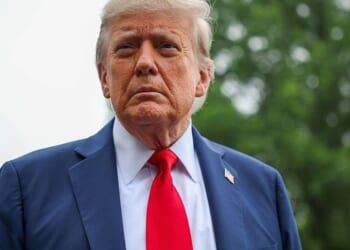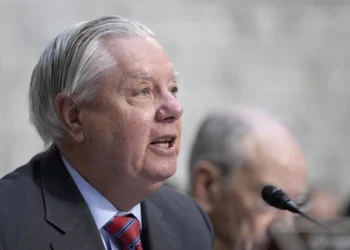“Why do we have a medical system in this country where too many people can’t get the treatment that they need?” Vice President J.D. Vance posed this question during his recent appearance on This Past Weekend w/ Theo Von — and it cuts to the core of America’s health care challenges.
As Vance rightly noted, Americans are propping up a broken global system — paying more for medicines and effectively subsidizing cheaper access abroad. But doubling down on foreign price controls won’t solve that.
President Trump’s recent executive order on drug pricing, which pegs U.S. prices to the lowest paid by other wealthy countries, risks trading one broken system for another. Supporters call it a free market move. In reality, the Most Favored Nation (MFN) policy is anything but. It’s price-fixing based on foreign government mandates. This would import the worst features of European socialized medicine into the United States.
That’s not a knock on the administration’s instincts. The system is rigged against patients, and American taxpayers are shouldering the global innovation burden. The fix, however, lies in unleashing a true American free market — one that roots out supply chain distortions and puts patients, not bureaucrats or middlemen, at the forefront.
Start with the basics: Under MFN, U.S. drug prices would be tied to the lowest amount paid by any OECD country with at least 60 percent of our GDP per capita. That includes many countries where government-run health systems routinely undervalue breakthrough medicines and decide which treatments patients can access — and when.
That’s not competition. That’s central planning. A market price originates from voluntary exchange, not foreign bureaucrats operating under fixed budgets and political incentives.
We know where that road leads. In countries using arbitrary price-setting benchmarks, patients are routinely denied or delayed access to new medicines. By late 2022, just 34 percent of new drugs launched globally were available in France, 37 percent in Italy, and 52 percent in Germany. Compare that to nearly 75 percent in the United States. Import their pricing models, and we’ll import their rationing — and avoidable suffering.
If we want to fix what’s broken, anti-market price caps aren’t the answer. Countries with government-imposed price ceilings aren’t negotiating in good faith. They’re freeloading off the American taxpayer instead of contributing their fair share to the costs of discovery. That’s not “market equilibrium.” It’s global cost-shifting.
Strong trade pressure best confronts these abuses. Other wealthy countries should be required to meet minimum spending targets on new medicines — benchmarked to what the United States invests relative to GDP. Those spending expectations should be written into binding agreements with clear enforcement mechanisms and consequences for noncompliance.
But overseas is not the only issue; we also need to fix what’s distorting prices at home.
Begin with the supply chain middlemen. The three largest pharmacy benefit managers (PBMs) now control more than 80 percent of the prescription drug market, acting as gatekeepers between manufacturers and patients. These entities, which play no role in innovation, dictate which drugs are covered, how much patients pay, and who profits.
In theory, they negotiate lower prices. In reality, they steer patients toward higher-cost drugs to maximize the hidden discounts and rebates they collect. A House Oversight Committee report identified hundreds of cases where PBMs favored costlier medications over cheaper alternatives.
In 2023 alone, the “gross-to-net bubble” — the gap between the list prices of branded drugs and net prices after rebates and other discounts — was $334 billion. In an ideal market, those savings would dramatically lower out-of-pocket costs for patients.
Instead, the system is cloaked in secrecy. Most patients are unaware of the discounts that PBMs negotiate, and they don’t see a dime of those discounts when they pick up their prescriptions. Patient cost-sharing is still based on the inflated, publicly disclosed list price — not the much lower negotiated price.
Today, PBMs, insurers, and other supply chain players capture more than half of every dollar spent on prescription drugs.
It’s time to put patients ahead of profiteers. Congress should sever the link between PBM pay and drug list prices and replace it with flat fees that don’t reward higher costs. Patients should receive rebates and discounts directly at the pharmacy counter — no detours. And PBMs should be forced to open the books. Pricing, rebates, and compensation must be transparent.
We also need to crack down on hospital conglomerates that abuse the federal 340B program. Initially created to support low-income and rural hospitals, 340B has ballooned into a multibillion-dollar loophole.
These hospitals purchase medicines at heavily discounted prices and resell them at a steep markup — up to five times their acquisition cost — with no obligation to deliver additional care or pass savings to patients. Most 340B hospitals provide less charity care than the national average.
The expansion of 340B — which now accounts for roughly 10 percent of gross U.S. drug spending — comes at the expense of patient affordability. The program continues to disincentivize the use of lower-cost medicines and fuel the consolidation of independent practices into higher-cost hospital systems.
It’s time for Congress to step in. Lawmakers should strengthen program eligibility requirements and require that participating hospitals reinvest 340B income into care for the underserved — not corporate expansion.
President Trump and Vice President Vance understand the need to fight for fairness, sovereignty, and putting America first. But MFN doesn’t advance that cause. If we want a fairer drug market, let’s build one — with real free market reforms. That’s the legacy conservatives should champion.
Drew Johnson is a budget policy analyst and government watchdog who was the Trump-
endorsed Republican nominee for Congress in Nevada’s 3rd Congressional District in 2024.
















